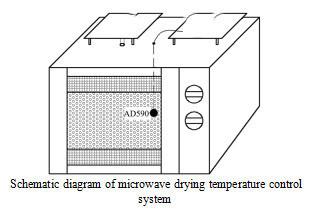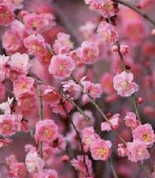
- Shandong Microwave Machinery Co.,Ltd.
- To be the Leader of microwave drying and edible oil refining equipments Manufacturer
Home> Company News> Application of Microwave Drying to Chimonanthus praecox
- AddressNo. 225, Huangqiao Village, Beiyuan, Tianqiao District, Jinan, Shandong, China
- Factory AddressNo. 225, Huangqiao Village, Beiyuan, Tianqiao District, Jinan, Shandong, China
- Phone(Working Time)+86 0531 85064681
- Phone(Nonworking Time)0086-15020017267
- Fax+ 86 0531 85064682
Application of Microwave Drying to Chimonanthus praecox
2018-12-05 15:44:41

Absrtact: The fire strength, treatment time and material quality of microwave dried waxberry were screened by water loss rate and rehydration rate. The results showed that the suitable ranges were 80%-100%, 80-120 s and 15-20 g, respectively. The effects of three factors (microwave fire intensity, microwave treatment time and material quality) on the quality of dried waxberry flowers were studied by orthogonal experiment design at three levels L (33). The water loss rate, rehydration rate and sensory score of dried waxberry flowers were determined.
The results showed that microwave treatment I (100% fire strength + 100 s treatment time + 20 g material quality) had 26.5 and 11.5 percentage points higher water loss rate and rehydration rate than A treatment (50% fire strength + 80 s treatment time + 10 g material quality), and 6 points higher sensory score than A treatment. Comprehensive comparison shows that treatment I (100% fire strength + 100 s treatment time + 20 g material quality) is the best treatment combination for microwave drying equipment.
Key words: microwave drying of waxberry flowers; microwave drying method; water loss rate; rehydration rate
Chimonanthus praecox (Linn.) Link has a long history of cultivation and high application value in China. Chinese Pharmacopoeia records that Chimonanthus tea can be used to prevent influenza. Guiyang Folk Herbs records that Chimonanthus flower as tea drink can cure long-term cough.
Xu Wenyue et al reported that Chimonanthus chinensis has the effects of relieving cough and phlegm, anti-inflammatory and antipyretic; Liu Li et al reported that Chimonanthus chinensis flower has the function of enhancing immunity; Jiangting et al reported that the flower oil made from the flower bud of Chimonanthus chinensis has a remarkable effect on scald. With its elegant fragrance and mellow and fresh taste, Chimonanthus flower tea is very popular with consumers. For a long time, how to improve the aroma and fresh color of Chimonanthus camellia is the main goal of drying technology research.
As it is the first time to explore the application of microwave embossing board made in the United States in the drying process of waxberry flowers (mainly used in the production of decals in the existing literature, the author believes that dried waxberry flowers can be used as decals as well as for the production of waxberry tea). At present, there is no experience that can be used for reference in the drying of waxberry tea in China. There are still some shortcomings in the experiment:
Firstly, the microwave firepower is limited by the fixed firepower of the microwave oven.
(The firepower intensity of the microwave oven can only be set at 100%, 80% and 50% gradients, so it is impossible to test the firepower intensity of the gradient in the range of 90% and 70%. More firepower gradients can be purchased in future tests.
Secondly, the processing time is not easy to control in the drying process of dried flowers, usually in tens to 100 seconds. Too short a time, too little water loss of petals will lead to the storage process of dried petals become black-brown or mildew. If the processing time is too long, the petals will be brown-black (scorched) adhesion, wax plum will be rehydrated. There are many fragments in scented tea, which affect the sensory quality and taste of scented tea, which need further exploration and research.
Thirdly, the pretreatment of waxberry flower only adopts the method of water rinsing, and refers to the method of steam sterilization when making dried chrysanthemum tea. Whether it will have better effect on making waxberry tea is unknown, which needs further exploration.
 High efficiency food beverage factory stone paper production line
High efficiency food beverage factory stone paper production line Factory price Fully automatic Machine PP/PS Plastic Sheet Production Line
Factory price Fully automatic Machine PP/PS Plastic Sheet Production Line used deformered bar rolling mill production line
used deformered bar rolling mill production line Manufacturing plant automatic factory puffed sticky rice cracker production line
Manufacturing plant automatic factory puffed sticky rice cracker production line Production Line Pp Ppr Plastic Pipe Making Machine 20-63mm Multi-layer Extrusion Production Line For Water Supply
Production Line Pp Ppr Plastic Pipe Making Machine 20-63mm Multi-layer Extrusion Production Line For Water Supply